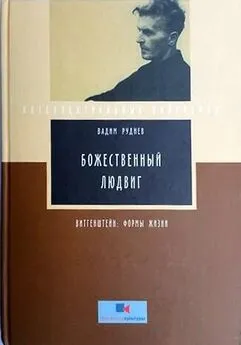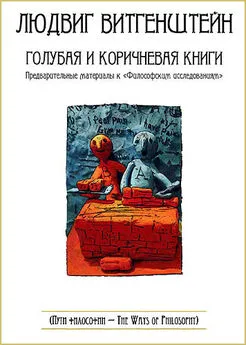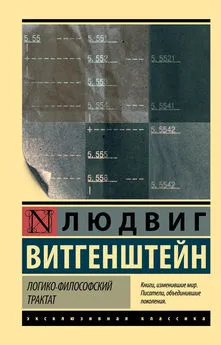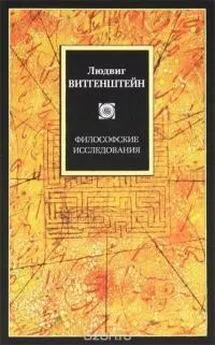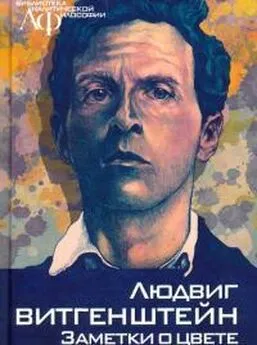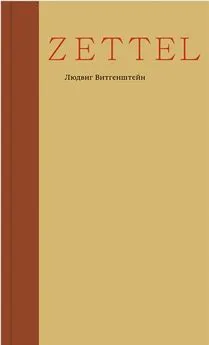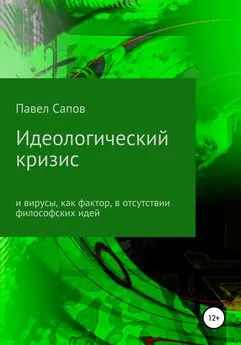Людмила Микешина - Философские идеи Людвига Витгенштейна
- Название:Философские идеи Людвига Витгенштейна
- Автор:
- Жанр:
- Издательство:неизвестно
- Год:1996
- ISBN:нет данных
- Рейтинг:
- Избранное:Добавить в избранное
-
Отзывы:
-
Ваша оценка:
Людмила Микешина - Философские идеи Людвига Витгенштейна краткое содержание
Философские идеи Людвига Витгенштейна - читать онлайн бесплатно полную версию (весь текст целиком)
Интервал:
Закладка:
4. Understanding the essence of the late Wittgenstein's analytic programmes and of his practical methods is hindered by the obtaining practice of reading his analytic considerations (excercises, illustrations and so on) in terns of usual theory. The result is viewing the "language-game" idea as a relativist, subjectivist theory of language, as the idea of "family resemblances" - so, it is treated as a theory of abstraction deserving severe criticism, as a frequently practiced analytical device of translating inner (mental, etc.) phenomena of psychology onto the plane of an external, available to the analysis, concrete action, i.e. as the behaviorist theory of consciousness This "shift in attitude" gives rise to various absurdities: the positions asccribed to the philosopher are those which he himself criticizes, etc. The correct reading of Wittgenstein's texts requires one to take into consideration the fact that the analytic ideas elaborated by him have practical-methodological - rather than theoretic - nature; so, they should be viewed as artificial procedures whose aim is create the habit of accuracy in correlating the verbal with the real. Meanwhile, both readers and investigators of Wittgenstein find it difficult to realize that the author of the analytic interpretation of philosophy could give up theoretical mode of thinking; that philosophy is, in his view, an activity (practice) - rather than a doctrine - aimed at clarifying the conceptual-speech forms through which the complicated, variable and dynamic reality is represented. Along with our critical, polemic attitude towards the analytic interpretation of nature and of the tasks of philosophy as to insufficient one, as to the one overlooking a whole complex of important problems [202] Проблемы и противоречия буржуазной философии 60-70-х годов. М., 1983.
, we would like to stress the need for dialectical-materialist interpretation (and pracctical application) of the authentic content present in the logical-speech analysis which is the real achievement of the XXth century analytic thought.
A.F. Griaznov. The problem of "conceptual necessity" in L.Wittgenstein's works [203] Тезисы доклада, прочитанного на VIII Международном конгрессе по логике, методологии, философии науки (секция 13 - История логики, методологии и философии науки). Москва 17-22 августа 1987.
1. The idea of "conceptual necessity" was investigated in the socalled logic of "internal relations" of British Absolute Idealism. At the center of its metaphysics lied a justification of the necessary character of judgements with their specific conceptual unity (it was supposed that sich a unuty could not be created by lodical constants). Conceptual ties were interpreted as the products of symbolism itself and treated as entirely dependent on the related terms. Necessary and internally essentical character of conceptual ties was explained by an intermediary activity of the "Absolute". In the beginning of the 20th century Russell's logic of "external relations" and his "multiple" theory of judgement stood in opposition to the logic of Absolute Idealism; it rehabilitated independent character of relation is and pluralistic ontology. This theory explained our ability to understand judgement's sense by our direct "acquaintance" with all the constituents. Traditional subject-predicate analysis of judgement's structure was super-seded by "functional" analysis. Inspite of the fact that this early analytical logic of "external relations" was widely accepted for some period of time a restoration of the priority of "internal relations" and the idea of "conceptual necessity" took place in Anglo-American philosophy after that. And this in general was due to lodical and philosophical activity of L.Wittgenstein.
2. Wittgenstein worked out his original "picture" theory in polemic with Russellian views. Wittgensteinian theory was based on idea of conceptual unity and isomorfism of sentence's "logical form" and an elementary fact which is pictured by the sentence. His acknowledgement that the "world" consists of "facts" and not of "things" stresses purely internal relations of logical "objects". There is a close correspondence between these relations and the relations of senses of the sentences. Early Wittgenstein distinguished between "signs" (which have "material" qualities) and "symbols" (which are signs used according to the rules of "logical syntax" and which have sense). "Symbols" are conceptual by their very nature and that is why all logical relations in the Tractatus are interpreted as different kinds of conceptual ties proper. Particularly, so-called "formal concepts" have symbolic character. Amongst them Wittgenstein singles out "function" which can not be its own argument because of its conceptual nature (in F(F) notation external and internal functions are totally different in sense, categorically). Adequate logical symbolism shows the limits of its own use (and this, according to Wittgenstein, makes "theory of types" futile, because paradoxical sentences simply become impossible). In the "right" logical theory there is a unuque system ("logical space") of internal relations and that is why, e.g., even introduction of a third value in a bivalent logic inevitably gives new sense to its interpretation of "truth" and "falsity".
3. After a revaluation of the role of "strict" logical (it took place in the end og the 20-s) internal qualities of "formal concepts" were transformed in Wittgenstein's texts into "conceptually necessary" rules of "depth grammar". This was realized in his theory of "criteria". In it a statement of the form "A is a criterion of B" means that by a certain linguistic convention it is true, that if A, then B. It was declared that (internal) criterial relations were lodically more powerful than inductive evidence ("symptoms"), but at the same time were not analytical. This feature of them was exploited by Wittgenstein in order to explain the fact that in the presence of a certain criterion an event (or an object) which is connected with it may not be present. Conceptual conventions were unevenly treated as absolutely basic for all types of "linguistic practice" which serves later Wittgenstein as the model of various kinds of human activity (so-called "forms of life" - Lebensformen). The position of peculiar "conceptual determinism" (first put forward in general form by British Absolute idealists) is expressed in his texts and in the works of many post-war analytical philosophers by the "grammar" of linguistic conventions which is interpreted as the universal foundation of philosophical and scientific inquiry and common-sense approach. This signals unevenly substitution of "conceptual necessity" for objective and necessary connections and relations. Largely because of that modern analytical philosophy arrives noawdays at deep theoretical inconsistencies.
S.A. Sokuler. The conception of science in the "Tractatus logico-philosophicus"
-
It is often said that in the "Tractatus" science is opposed to philosophy as senseful propositions to senseless ones. Indeed, Wittgenstein characteries science as the totality of true, senseful propositions, as saying nothing except what can be said (4. 11; 6. 53). Also he says that "most propositions and questions, that have been written about philosophical matters, are not false, but nonsensical" (4. 003). If it isn't clear from these remarks that for Wittgenstein science is an ideal and philosophy is an aberration that hardly has any right to the existence? I think that it isn't clear at all. Trying to show this we should clarify the role of senseful - senseless distinction. This will shed some light on Wittgenstein's understanding both of science and of philosophy.
Let us have a closer look at the thesis (4. 11) of the "Tractatus": "The totality of true propositions is the total natural science (or the totality of the natural sciences)". This thesis looks at first as an overvaluation of the science. It looks as stating that all propositions of natural sciences are true. How outmoded it looks today, after Popper's critics of the verification and justification, after Kuhn's theory of the scientific revolutions, after Feyerabendian critics of science! But let us wait for a moment.
I
What is this "total natural science"? Is it the sum of all received scientific theories? The answer is "no", I think. Why? Because the total natural science is constituted by the totality of true propositions. According to the conception of the "Tractatus", a proposition is true if it is a picture of some fact. A proposition is true, if "To the configuration of the simple signs in propositional sign corresponds the configuration of the objects in the state of affaires" (3. 21).
Can the theoretical propositions of science be pictures of states of affairs? I think they cannot, for to be pictures they must either be configuration of the simple signs, or be reducible to such configuration by analysis.
Let us begin with the first possibility.
In that case theoretical terms of scientific theories become simple signs representing objects in propositions. For example, sign "gene" represents gene, sign "electron" represents electron and so on. Hence, there must be the theoretical objects such as electrons and genes in the world of the "Tractatus". But their existence is incompatible with what Wittgenstein says. For example, if there were such objects as electrons, some theoretical statements about them (stating what electron is) should become apriori. On the contrary, for Wittgenstein "there is no picture which is a priori true" (2. 225). If there were theoretical objects, some elementary statements about them could depend upon one another (for example, being connected by the causal relation). On the contrary, for Wittgenstein elementary propositions are independent (5. 134 - 5. 136). Hence the theoretical propositions of sciences cannot be configurations of simple signs representing the corresponding theoretical objects.
Now we must think about the second possibility, i.e. the possibility of a reduction of theoretical propositions to the truth-functions of the propositions, which are the configurations of the simple signs representing objects. The members of Vienna Circle tried to accomplism the reduction of this sort without success, as is well known. But Wittgenstein never tried to do this and didn's discuss such possibility in the "Tractatus". He wrote about scientific theories and its statements: "All propositions, such as the law of causation, the law of continuity in nature, the law of least expenditure etc., etc all these are a priori intuitions of possible forms of the propositions of science" (6. 34). What are "a priori intuitions of possible forms of propositions"? Anything but not the pictures of facts. Hence, by definition , they can't be senseful propositions. "Newtonian mechanics, for example, - Wittgenstein continues - brings the description of the universe to a unified form. ...Mechanics determine a form of description..." (6. 341). If so, it cant't be a picture of reality by definition of a picturing relation. So, the propositions of mechanics are senseless, too.
There are some direct evidences in support of the thesis that Wittgenstein sees the theoretical propositions of science as senseless. They can be found, for example, between the notes, taken by Fr. Waismann. So Wittgenstein have said: "Ein Naturgesetzt lasst sich nicht verifizieren und nicht falsifizieren. Vom Naturgesetzt kann man sagen, dass es weder wahr noch falsch, sondern "wahrscheinlish" ist, und "warscheinlish" bedeuted dabei: einfach, bequem. Eine Aussage ist wahr oder falsh, nie wahrscheinlich. Was wahrscheinlich ist, ist keine Aussage" (Waismann Fr. Wittgenstein und der Wiener Kreis. Oxford, 1967. S. 100). "Die Physik konstruiert ein System von Hypothesen, dargestellt als ein System von Gleichungen. Die Gleichungen der Physik konnen weder wahr noch falsch sein" (Ibid. S. 101).
Читать дальшеИнтервал:
Закладка:
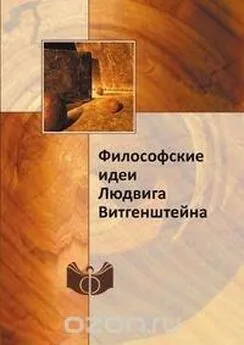
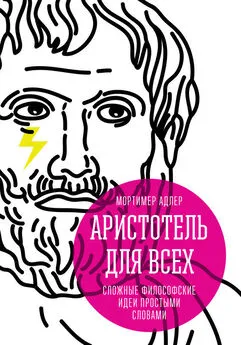
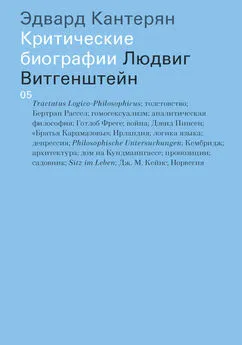
![Людвиг Витгенштейн - Философские исследования [litres]](/books/1057650/lyudvig-vitgenshtejn-filosofskie-issledovaniya-litre.webp)
